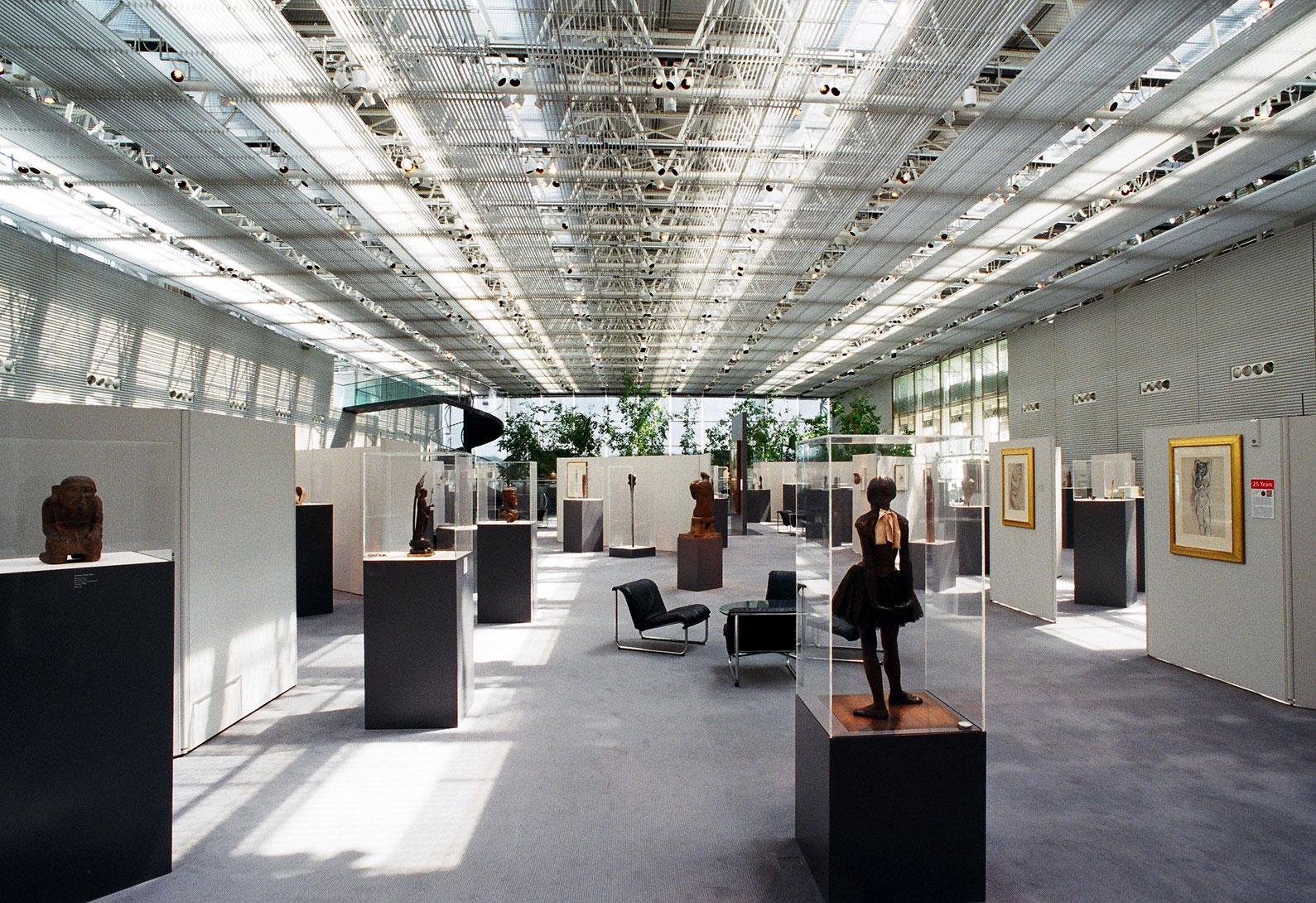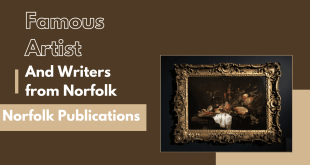One of Norfolk’s most important historical monuments is the Sainsbury Centre for Visual Arts, which is located on the University of East Anglia‘s Norwich school. Opened in 1978, this world-class gallery and museum has become an essential location for artwork lovers, historians, and architects everywhere. The building is a classic of contemporary architecture, designed by the prominent Norman Foster, and it houses an extraordinary collection of art from various eras and regions.
A wealthy education program, modern art, and a unique experience are all provided by The Sainsbury Centre. Whether you’re a student of art history, a native resident, or a tourist, the Sainsbury Centre provides an opportunity to engage with craft from across the globe and across time.
Sainsbury Centre for Visual Arts

This article will delve into the history of the Sainsbury Centre, its structural significance, its choices, and why it remains a must-visit place for people exploring Norfolk’s lively social environment.
The Sainsbury Centre for Visual Arts ‘ History and Origins
Founding Vision
Sir Robert Sainsbury and his family Lisa Sainsbury gave generously to establish the Sainsbury Centre for Visual Arts. The couple’s remarkable personal collection of world art included works by some of the most renowned 20th century artists, ranging from ancient artifacts to modern pieces. This priceless collection was part of their gift to the University of East Anglia ( UEA ), as well as a vision for a world-class arts center that would inspire future generations.
Sir Robert and Lady Sainsbury’s set included a varied range of products, from ancient Egyptian monuments to contemporary carvings by the likes of Henry Moore, Pablo Picasso, and Alberto Giacometti. Their conviction that all forms of art may be available was a driving force behind their contribution, which continues to shape the mission of the Sainsbury Centre.
The University of East Anglia’s Function
The decision to home the Sainsbury set at UEA marked a turning point for the institution. With the establishment of the Sainsbury Centre in 1978, the organization gained a prominent cultural location that would enhance both its academic standing and function as a social hub for the wider Norfolk area.
Over the years, the Sainsbury Centre has expanded its part within UEA, offering education programs, lectures, and study options that benefit kids, faculty, and customers. The university remains a powerful and growing institution because of its integration with the institution’s academic foundations.
Read likewise: Historical Landmarks in Norfolk: A Journey Through Time
Architectural Value: A Masterpiece by Norman Foster
The Visionary Design
The Sainsbury Centre’s architecture is one of its distinguishing qualities. The tower was designed by Norman Foster, one of the most important engineers of the 20th century, known for his modern, contemporary design and modern use of supplies. One of Foster’s earliest significant commissions, The Sainsbury Centre, would help him establish himself as a global architectural force.
The building stands out from conventional museum spaces by its bold, futuristic design, which is frequently referred to as a “work of art” in itself. Its use of prefabricated steel and glass was regarded as pioneering at the time of its construction. Foster’s minimalist approach, with its open-plan layout and seamless integration of interior and exterior spaces, was a departure from conventional museum architecture, creating a fluid environment that encouraged movement and interaction with the artworks.
A Space for Light and Flexibility
One of Foster’s most significant changes in the Sainsbury Centre’s design was his emphasis on natural light. The exhibition spaces are made bright and airy by the building’s large windows, which enhance the viewing experience. The flexible, open-plan gallery spaces allow for the easy rearrangement of exhibitions, ensuring that the museum can evolve and adapt as new collections and exhibitions are introduced.
The Sainsbury Centre’s goal was to encourage visitors to move freely through the space rather than follow a predetermined path. Visitors can explore the works at their own pace and form their own connections between them, which makes for a more organic interaction with the artworks.
The Collections: A Journey Through Global Art
The Sainsbury Centre’s collection is one of the most extensive and diverse in the UK, spanning thousands of years of art from all over the world. The collection, which spans all of its sources, reflects the Sainsburys ‘ belief in the universality of art and its ability to transcend cultural boundaries.
Tribal and Ancient Art
The impressive selection of ancient and tribal art is a key component of the Sainsbury collection. Visitors can explore works from ancient Egypt, Greece, and Rome, as well as artifacts from Africa, Oceania, and the Americas. Highlights include ancient Egyptian funerary figures, Greek vases, and masks from various African cultures.
These works provide a glimpse into the daily routines, religious beliefs, and artistic practices of ancient civilizations. The collection emphasizes the ongoing nature of human creativity by illustrating how different cultures have expressed themselves through their art throughout space and time.
Modern Art
The Sainsbury Centre is perhaps best known for its collection of contemporary art, which includes pieces by some of the most important 20th-century artists. Sir Robert Sainsbury had close personal relationships with many leading artists of the time, including Henry Moore, Alberto Giacometti, and Francis Bacon, whose works feature prominently in the collection.
The collection of contemporary art includes works in a range of media, including sculpture, painting, and drawing. Henry Moore’s large-scale bronzes are among the highlights, alongside Giacometti’s expressive figures and Picasso’s bold explorations of form and color. These works challenge the more conventional pieces in the collection by demonstrating how contemporary artists have challenged the boundaries of artistic expression while challenging the boundaries of the past.
Decorative Arts
In addition to fine art, the Sainsbury Centre also boasts an impressive collection of decorative arts, including ceramics, jewelry, and textiles. Offering a comprehensive examination of the history of design and craftsmanship, these items range from medieval European artifacts to contemporary craft pieces.
The decorative arts collection’s emphasis on the relationship between form and function is one of its strengths. Many of the pieces on display were created with both practical and aesthetic purposes, illustrating the tangled lines between art and daily life.
Temporary Exhibitions and Events
The Sainsbury Centre’s permanent collection is a major draw, but the museum is also known for its dynamic program of temporary exhibitions. These exhibitions frequently explore contemporary themes, present fresh talent, or offer fresh interpretations of permanent collection pieces.
Recent Exhibitions
A number of exhibitions have been held at the Sainsbury Centre in recent years that have attracted visitors from all over the UK and beyond. Notable recent exhibitions include:
- ” Francis Bacon and the Masters”: This groundbreaking exhibition brought together works by Francis Bacon with pieces by the old masters who inspired him, including Velázquez, Rembrandt, and Michelangelo.
- ” Superstructures”: This exhibition celebrated the 40th anniversary of the Sainsbury Centre and explored the role of architecture in shaping modern art, design, and culture.
- ” Grayson Perry: The Pre-Therapy Years”: Showcasing some of the earliest works of Grayson Perry, this exhibition offered insight into the artist’s formative years and his exploration of identity and society.
These exhibitions, along with a regular calendar of talks, workshops, and events, ensure that the Sainsbury Centre remains a vibrant and engaging space for the arts.
Educational Outreach and Programs
Education has always been at the heart of the Sainsbury Centre’s mission. The museum collaborates closely with students and academics to provide a range of educational opportunities, from lectures and seminars to hands-on workshops and curatorial internships, as part of the University of East Anglia.
School Visits and Family Programs
The Sainsbury Centre’s extensive educational offerings for schools and families reflect this commitment. Families can take part in creative activities designed to engage children with the artworks, while school groups are encouraged to take guided tours and interactive workshops to the museum’s collection.
The museum’s family-friendly approach ensures that visitors of all ages can enjoy and learn from the collection, with activities ranging from storytelling sessions to craft workshops.
UEA Partnerships and Research
As part of UEA, the Sainsbury Centre plays a key role in supporting academic research in art history, archaeology, and anthropology. Students and university researchers have the chance to collaborate closely with the museum’s curatorial staff, creating exhibitions, and conducting research on the collection.
The museum also holds lectures and conferences that bring together world-renowned academics and industry experts to discuss the most recent developments in art, archaeology, and museum studies. These activities help establish the Sainsbury Centre as a hub for innovation and intellectual exchange.
The Sainsbury Centre for Popular Culture
The Sainsbury Centre’s architectural significance has not been overlooked by the rest of the world. In recent years, the building has featured prominently in popular culture, most notably in the Marvel Cinematic Universe. The museum’s futuristic design served as the backdrop for the Avengers ‘ headquarters in films such as Avengers: Age of Ultron and Spider-Man: Homecoming. This exposure has introduced the Sainsbury Centre to people who may not have otherwise discovered this architectural gem. It has also drawn a new audience to it.
Read also: Discover Norfolk’s Best Museums: A Cultural Journey Through History and Art
Conclusion
The Sainsbury Centre for Visual Arts is more than just a museum, it is a cultural landmark that brings together art, architecture, and education in a unique and dynamic environment. Its world-class collection of global art, stunning modernist architecture, and commitment to public engagement make it a must-visit destination for anyone exploring Norfolk’s rich cultural landscape.
Whether you’re drawn by the works of Henry Moore and Pablo Picasso, the stunning design by Norman Foster, or the opportunity to learn through hands-on educational programs, the Sainsbury Centre offers something for everyone. It serves as a hub for artistic and intellectual exploration and is a hub for learning and creativity in Norfolk, and it continues to inspire visitors from all over the world.
 Norfolk Web Publications Web Publications in Norfolk!
Norfolk Web Publications Web Publications in Norfolk!

